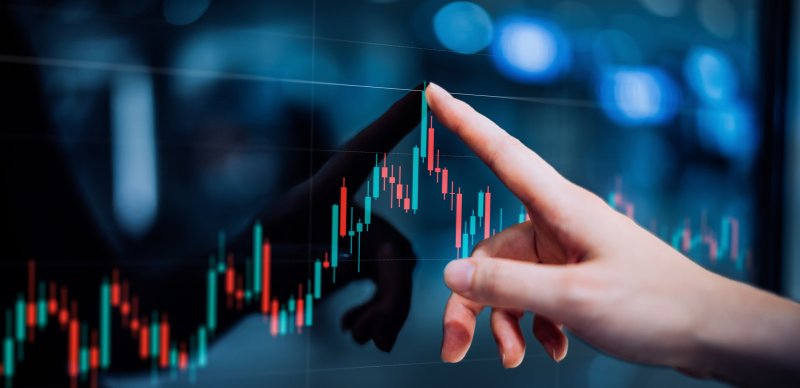Investment update – 30 June to 30 September 2025
Between 30 June and 30 September 2025, world stock markets generally moved higher, providing positive returns to investors. There were two main contributors to stock market performance:
- Company profits stayed strong in most regions over the quarter. When companies are doing well there is the potential for higher dividends, as well as the potential to reinvest some of those revenues to expand their businesses.
- Investors became more confident that central banks were getting closer to cutting interest rates. Lower interest rates are considered positive because they make it easier for companies to borrow money to invest in their products, creating the potential to grow profits.
These factors made shares more attractive to investors leading them to invest more, driving prices higher.
Rises were led by the US, Japan and – especially – China, where shares rebounded sharply after a weak spell earlier in the year, helped by government support measures and optimism around the technology sector. Strong performance in China helped to lift emerging markets, supported by solid returns from shares in South Korea and India.
In the US, technology companies — especially those linked to artificial intelligence (AI) — led the gains. Investors were encouraged by solid earnings and hopes that the US Federal Reserve would start reducing interest rates in the months ahead.
Japanese shares were supported by a weaker yen, which helps exporters, and expectations of more government and central bank support, which makes it easier for companies to do business and potentially increase profits.
Europe and the UK also saw gains. Energy and industrial companies performed well in Europe, helped by stronger global demand. Similarly, big mining and oil companies listed in the UK benefited from rising commodity prices, although some UK-focused firms were held back by slower domestic growth.
Bond markets saw some volatility as expectations around interest rates evolved. In the UK, concerns about higher government borrowing and inflation led to bond prices falling. However, towards the end of the quarter, the Bank of England signalled it would slow down its programme of selling gilts, which helped to reduce downward pressure and UK government and commercial bonds ended the quarter with a small positive return.
US government bonds (Treasuries) and European government bonds also saw some volatility. Prices for longer term bonds – bonds which mature in 10 years or more – in particular fell slightly in places as investors anticipated large future bond sales by governments, but shorter-term bonds generally held up better.
Outlook
As we enter the final quarter of the year, we have a neutral view on both equities and bonds.
On equities, there is positive market momentum that could continue to drive prices upwards, but macro and valuation risks remain. In the US, share prices continue to rise, driven to a large extent by the strength of the AI theme, but weak economic signals and high valuations are of potential concern. We are also neutral on China, despite the strength of its own tech and AI sector, due to the country’s economic woes.
We are more positive on Europe, where dividend income and valuations are more attractive, and the UK, where large companies are less exposed to tariffs than elsewhere. Japan also looks positive thanks to a good economic backdrop and the potential for growth from companies that are investing more in their businesses.
The AI theme continues to create many opportunities, but as ever we are alive to the risks. While a correction in the sector is not out of the question, we believe that genuine commercial applications underpin valuations.
On bonds, concerns over government spending, the direction of inflation and central bank interest rate moves make us cautious. We favour high yield credit in the US and Europe, as well as government bonds from the UK and select countries in the eurozone, particularly Spain and Italy.
Market returns for the last six months have been very positive, which is satisfying for investors, but we are never complacent and continue to keep a vigilant watch over the assets we manage on behalf of our clients.
Find out more about investing
Helpful information to help you understand your investments.

Investing in bonds
A bond is like a loan that pays regular interest and a final lump sum.

Investing in shares
Owning a share in a company gives you a stake in its success.

Investing in a fund
A fund is an easy way to invest in a diverse portfolio of different assets.

Log in to our online portal
Find out how much your investment is worth and how your fund is performing.

Your A to Z of key investment jargon
Key investment terms explained.

Got a question?
Our frequently asked questions provide you with more information on key topics.
Disclaimer
Past performance is not a reliable indicator of future results. The value of investments may fall as well as rise and you may not get back the full amount invested.
This document is for informational purposes only and does not constitute investment research or financial analysis relating to transactions in financial instruments as per MIF Directive (2014/65/EU), nor does it constitute on the part of AXA Investment Managers or its affiliated companies an offer to buy or sell any investments, products or services, and should not be considered as solicitation or investment, legal or tax advice, a recommendation for an investment strategy or a personalized recommendation to buy or sell securities.
Due to its simplification, this document is partial and opinions, estimates and forecasts herein are subjective and subject to change without notice. There is no guarantee forecasts made will come to pass. Data, figures, declarations, analysis, predictions and other information in this document is provided based on our state of knowledge at the time of creation of this document. Whilst every care is taken, no representation or warranty (including liability towards third parties), express or implied, is made as to the accuracy, reliability or completeness of the information contained herein. Reliance upon information in this material is at the sole discretion of the recipient. This material does not contain sufficient information to support an investment decision.
Issued in the UK by AXA Investment Managers UK Limited, which is authorised and regulated by the Financial Conduct Authority in the UK. Registered in England and Wales No: 01431068. Registered Office: 22 Bishopsgate London EC2N 4BQ
In other jurisdictions, this document is issued by AXA Investment Managers SA’s affiliates in those countries.
Risk Warning
The value of investments, and the income from them, can fall as well as rise and investors may not get back the amount originally invested.
